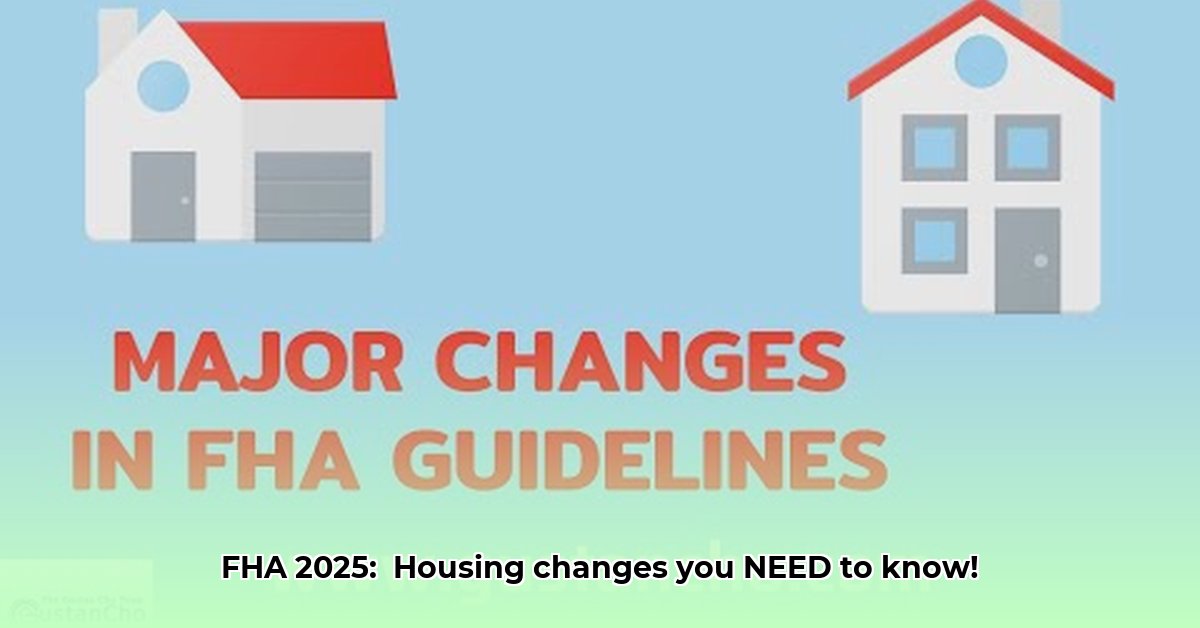
4000.1 FHA: Decoding the 2025 Housing Policy Changes
The Federal Housing Administration (FHA) is implementing significant changes to its loan processes, effective April 10, 2025, via the updated HUD Handbook 4000.1. This update consolidates several existing handbooks into a single document, aiming for greater clarity and efficiency. However, the full implications of these changes are still unfolding, requiring careful analysis and proactive adaptation for all stakeholders. This article explores what is known about the 4000.1 FHA update, addresses remaining uncertainties, and provides actionable advice for homebuyers and lenders.
The Great FHA Handbook Consolidation: What We Know (and Don't)
The core goal of the 4000.1 update is to streamline the FHA loan process. By merging multiple documents into one comprehensive handbook, HUD aims to reduce confusion and improve efficiency. However, without access to the complete handbook text, a detailed analysis of every specific change is impossible. This situation is analogous to receiving an updated manual for complex machinery; while the intent to simplify is clear, the exact nature of the improvements remains to be seen until the manual is thoroughly reviewed.
What is known is that the changes officially take effect April 10, 2025, providing a three-month window for adaptation. This period is critical for all stakeholders to understand and implement the new guidelines. But how will the changes ultimately impact the housing market?
Who's Affected? The Ripple Effect of 4000.1 FHA Changes
The 4000.1 FHA update will significantly impact various stakeholders across the housing ecosystem. Understanding these implications is crucial for effective navigation of the coming changes. The following table provides a preliminary assessment of the potential short-term and long-term effects:
| Stakeholder Group | Short-Term Impacts (Next Year) | Long-Term Impacts (3-5 Years) |
|---|---|---|
| HUD & Affiliated Agencies | Internal training, procedure adaptation, and monitoring initial outcomes. | Ongoing review, potential handbook revisions based on real-world results. |
| Mortgage Lenders | Updating internal guidelines, staff training, and loan process adjustments. | Re-evaluated lending strategies, recalibrated risk assessments. |
| Home Buyers/Applicants | Potential initial delays in application processing; new procedure navigation. | Improved clarity regarding housing policy and program accessibility. |
| Advocacy Groups | Monitoring changes' effects on vulnerable populations, focusing on equity. | Continued monitoring, potential advocacy for modifications based on long-term effects. |
What Homebuyers Can Do Right Now: Proactive Steps
While uncertainty remains, homebuyers can take these proactive steps:
- Stay Informed: Regularly check HUD's website and your lender's website for updates and announcements related to the 4000.1 handbook changes.
- Communicate with Your Lender: Discuss the potential impact of these changes on your mortgage application with your lender. Ask questions and seek clarity.
- Maintain Flexibility: Be prepared for potential initial delays or adjustments in the application process as everyone adapts to the new rules.
- Conduct Thorough Research: Once the full handbook is released, carefully review the sections pertinent to your situation. This proactive approach will greatly reduce potential confusion and delays.
- Consider Alternative Options: Explore various mortgage options and lender preparedness to find the best fit for your circumstances.
How Will HUD Handbook 4000.1 Changes Impact Mortgage Lenders?
The 4000.1 update represents both a simplification and a shift in requirements for mortgage lenders. The consolidation into a single handbook should improve efficiency in the long run. However, new stipulations and processes will require immediate adaptation. This section focuses on the direct impact on the lending industry.
Key Changes and Their Implications
While a complete analysis requires access to the full updated handbook, some key changes are emerging:
- Revised Appraisal Documentation: Clarified distinctions between "observations" and "examinations" in appraisal reports could alter lender assessment processes and potentially influence loan approvals. Will this lead to more stringent appraisals? Only time will tell.
- Stricter Fraud Reporting: Enhanced fraud reporting requirements increase the compliance burden on lenders, necessitating thorough documentation of all potential fraudulent activity. Will this added rigor increase operational costs?
The April 2025 Deadline: A Call to Action
Lenders must act decisively before April 10, 2025, to avoid future complications. Key actions include:
- Comprehensive Handbook Review: Thoroughly examine the updated handbook for all relevant changes to existing practices.
- Staff Training: Ensure all staff members fully understand and can apply the new rules and regulations efficiently.
- System and Workflow Updates: Adapt internal systems and workflows to comply with the handbook's new requirements.
- Communication with HUD: Seek clarifications and address any ambiguities directly with HUD.
- Contingency Planning: Anticipate and mitigate potential disruptions to loan processing during the initial implementation phase.
What We Don't Know Yet
Despite the detailed framework provided by the handbook, certain aspects remain unclear. Real-world application will inevitably reveal unforeseen nuances requiring interpretation and adaptation. The magnitude of these updates' impact won't be fully understood until lenders begin working within the new system. Therefore, ongoing communication with HUD and a flexible approach are critical for successfully navigating this transition.
Looking Ahead: Uncertainties and Ongoing Research
The 4000.1 FHA update presents both opportunities and challenges. While the consolidation simplifies the information landscape, the intricate details of the new requirements necessitate careful planning and careful adaptation. Proactive measures, including ongoing communication and meticulous adherence to the new guidelines, will prove essential for ensuring a smooth transition. The coming months will clarify the long-term impact of these important changes on the housing market.